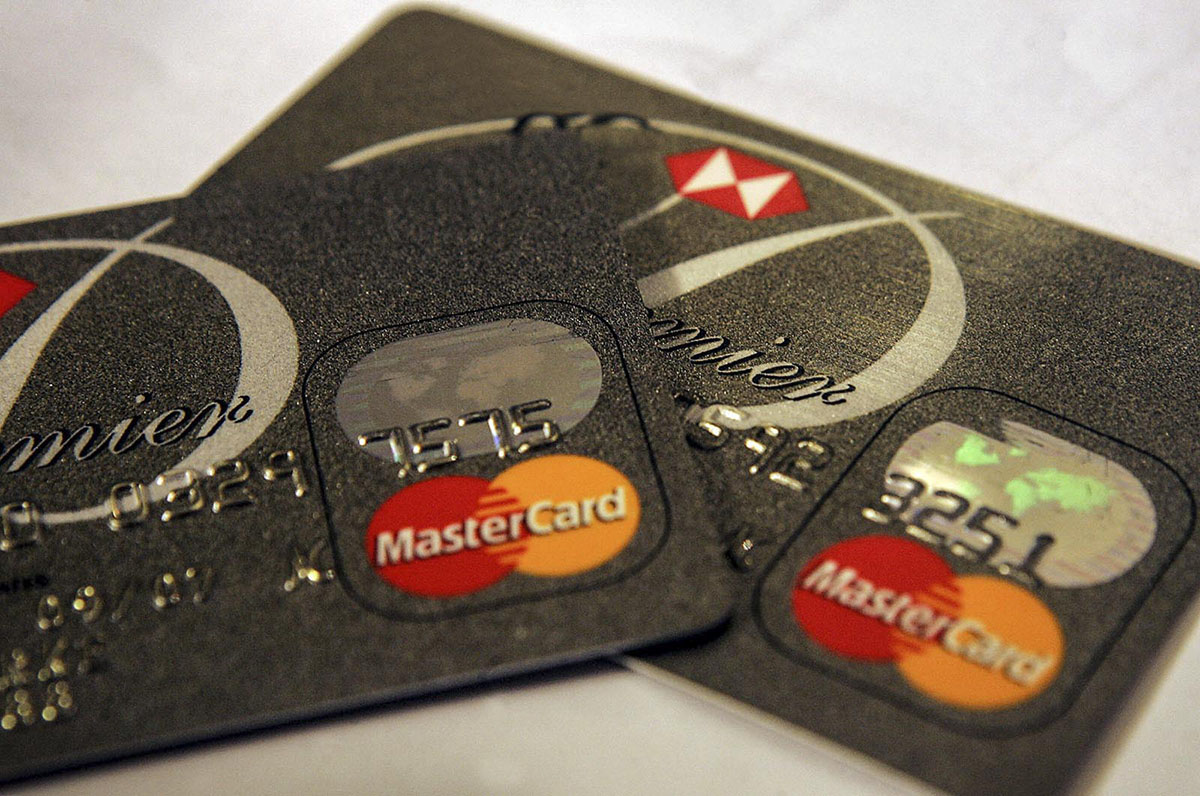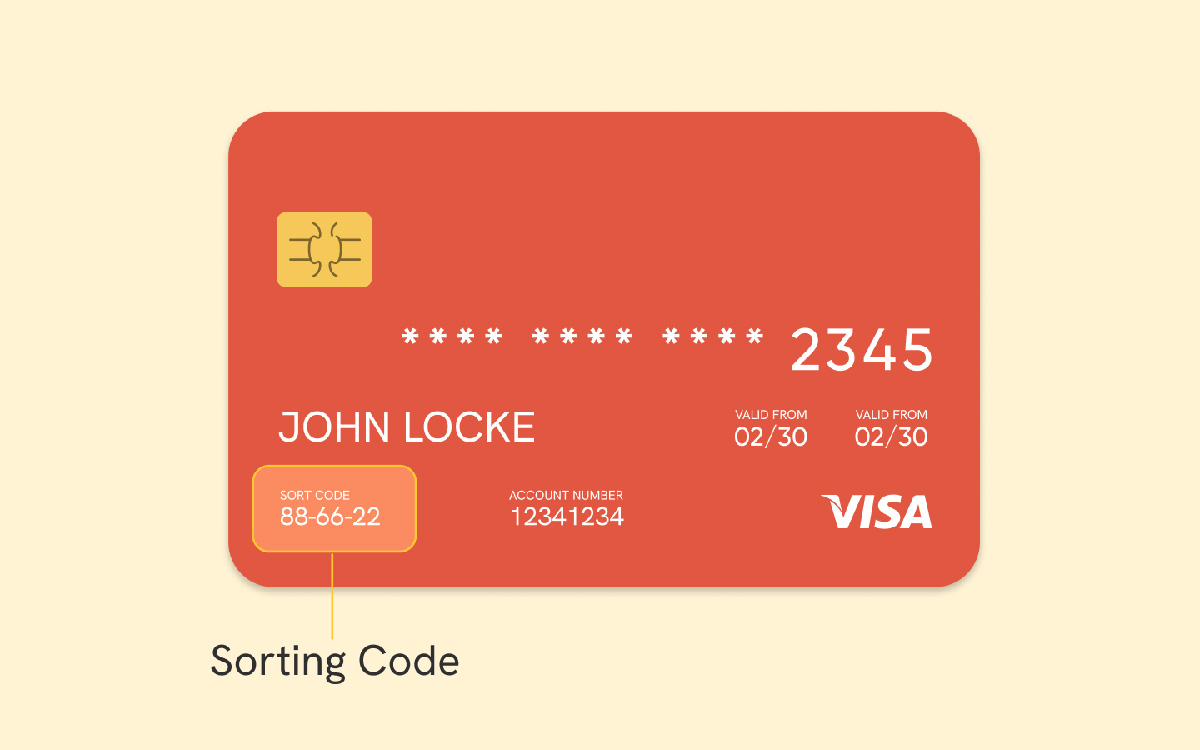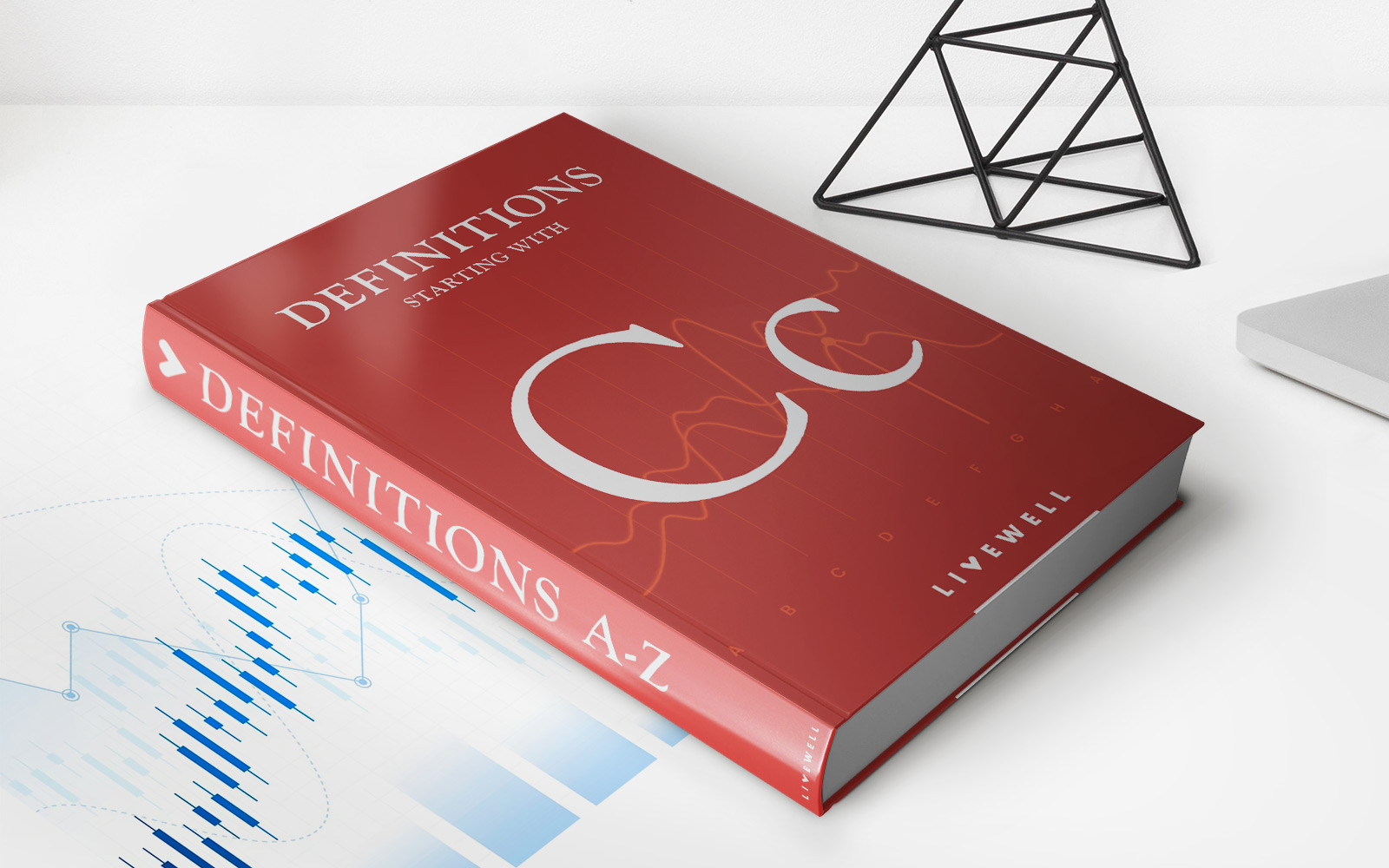

Finance
What Is The ZIP Code For A Credit Card
Modified: December 30, 2023
Discover what zip for credit card means and how it relates to finance. Enhance your financial knowledge and get a better understanding of credit card terminology.
(Many of the links in this article redirect to a specific reviewed product. Your purchase of these products through affiliate links helps to generate commission for LiveWell, at no extra cost. Learn more)
Table of Contents
Introduction
Welcome to the world of modern finance, where convenience and flexibility are key. In recent years, the concept of “zip” has become increasingly popular in the realm of credit cards. Perhaps you’ve heard the term but aren’t quite sure what it means or how it affects your financial transactions. Don’t worry, we’ve got you covered.
Zip for credit cards refers to a unique feature that allows cardholders to divide their purchases into smaller, more manageable payments. It’s a way for consumers to enjoy the benefits of a credit card while having the flexibility to pay off their purchases over time. In this article, we will explore exactly what zip means for credit cards, how it works, its benefits and drawbacks, and how you can apply for a zip credit card.
So, if you’re curious about the latest trends in credit card usage and want to stay informed about the innovative options available to you, keep reading to discover all there is to know about zip for credit cards.
What Does “Zip” Mean for a Credit Card?
When it comes to credit cards, “zip” refers to the ability to split your payment for a purchase into multiple smaller installments. Instead of having to pay the full amount upfront, zip allows you to break it down into manageable chunks. This flexibility is particularly beneficial for larger purchases that you may not be able to afford in one go.
With zip, you can make a purchase and then choose how many installments you want to pay it back in. For example, if you buy a new laptop for $1,000 and opt for four installments, you will only have to pay $250 per month over the course of four months.
The main benefit of zip for credit cards is that it provides financial flexibility. It allows you to spread the cost of your purchases over time, making them more affordable and easier to manage within your budget. This feature can be especially useful for unexpected expenses or when you want to treat yourself to a luxury item without depleting your savings.
Another advantage of zip for credit cards is that it often comes with low or even zero interest rates. This means you won’t be charged additional fees or accrue interest on your installments, making it a cost-effective solution for budget-conscious buyers.
It is important to note that zip is not available on all credit cards. It is typically offered by specific financial institutions or in partnership with retail stores, allowing you to use zip as a payment option for their products or services.
Overall, zip for credit cards is a convenient and flexible feature that allows you to make purchases without the burden of paying the full amount all at once. It provides an innovative alternative to traditional credit card payments, giving you greater control over your finances and making larger purchases more attainable.
How Does Zip Work?
Now that you understand what zip means for a credit card, let’s delve into how it actually works. Zip operates as a separate payment platform that integrates with your credit card. When making a purchase, you have the option to choose zip as your payment method.
Once you select zip, you will be prompted to enter your credit card information, just as you would for any other online transaction. However, instead of charging the full amount to your card, zip calculates the installment payments based on the duration you choose.
For example, if you purchase a TV for $1,000 and decide to pay it off in four monthly installments, zip will charge your credit card $250 each month. The remaining balance will be stored in a zip account linked to your credit card.
Throughout the installment period, you will receive regular reminders and notifications regarding your upcoming payments. Once the installments are complete, you can continue using your credit card as usual, without any further involvement from zip.
It’s important to note that zip may have specific terms and conditions, such as minimum purchase requirements or eligibility criteria. Make sure to familiarize yourself with these details before using zip for your credit card transactions.
In addition, zip also offers the option to link multiple credit cards to your account. This allows you to choose which credit card you want to use for each individual purchase, providing you with even more flexibility and control over your payments.
Overall, zip simplifies the payment process for credit card users by allowing them to divide their purchases into manageable installments. It is designed to provide convenience, transparency, and flexibility, making it easier for users to budget their expenses and stay on top of their financial commitments.
Benefits of Using Zip for Credit Cards
Using zip for credit cards comes with a range of benefits that can enhance your financial experience. Let’s take a closer look at some of the advantages:
- Financial Flexibility: One of the main benefits of using zip for credit cards is the flexibility it offers. By splitting your payments into installments, you can manage your expenses more efficiently and make larger purchases more affordable. This can be particularly valuable for unexpected costs or when you want to make a big-ticket purchase without straining your budget.
- Low or Zero Interest Rates: Many zip programs come with low or even zero interest rates on the installments you choose. This means you won’t have to worry about accruing additional fees or paying hefty interest charges on your purchases. It can save you money in the long run and make your payments more affordable.
- No Credit Checks: Unlike traditional credit options, zip for credit cards often does not require a credit check. This makes it more accessible to a wider range of individuals, including those with limited or less-than-perfect credit histories. It can be a convenient alternative for those who may not qualify for traditional credit options.
- Convenience and Ease of Use: Zip provides a simple and straightforward payment solution. It integrates seamlessly with your credit card, allowing you to make purchases and set up installments with just a few clicks. The user-friendly interface and automated reminders make it easy to stay on top of your payments and manage your finances effectively.
- Multiple Payment Options: With zip, you have the flexibility to choose from various installment plans and payment durations. Whether you prefer weekly, bi-weekly, or monthly installments, zip can accommodate your preferences. This allows you to tailor your payments to align with your budget and financial capabilities.
These benefits highlight the advantages of using zip for credit cards. It provides consumers with the convenience, flexibility, and transparency they seek when making purchases on credit. By offering manageable installments, low interest rates, and a hassle-free payment process, zip enhances the overall credit card experience and empowers users to make informed financial decisions.
Drawbacks of Using Zip for Credit Cards
While zip for credit cards has its benefits, it’s important to also consider the potential drawbacks before diving in. Here are some of the possible downsides:
- Additional Fees: Some zip programs may charge additional fees for using the service. These fees could include transaction fees, late payment fees, or annual membership fees. It’s important to carefully review the terms and conditions of the zip program to understand if and how these fees may impact your overall cost.
- Impact on Credit Utilization: When you use zip for credit cards, the full purchase amount is still considered part of your credit utilization. This means that it could impact your credit score and borrowing capacity. If you have a high credit utilization ratio, creditors may view you as being financially stretched, which could affect your ability to obtain additional credit in the future.
- Overspending Tendency: The convenience of zip’s installment payments may tempt some individuals to overspend. It’s important to exercise caution and only use zip for purchases that you can comfortably afford within your budget. Otherwise, you may find yourself accumulating debt and struggling to make payments on time.
- Limited Acceptance: Not all merchants and retailers accept zip as a payment option. This means that you may be limited in where you can use your zip-enabled credit card. It’s essential to check whether your favorite stores or online platforms support zip before relying on it for your purchases.
- Possible Impulse Purchases: While zip can provide financial flexibility, it’s essential to be mindful of the temptation to make impulsive purchases. Convenient payment options may make it easier to justify buying items you don’t truly need or can’t afford in the long run. Responsible spending and careful budgeting are still essential to avoid falling into a cycle of debt.
Consider these potential drawbacks and weigh them against the benefits before deciding to use zip for credit cards. It’s essential to make an informed financial decision that aligns with your personal circumstances and financial goals.
How to Apply for a Zip Credit Card
If you’re interested in taking advantage of the convenience and flexibility of zip for credit cards, here is a general guide on how to apply:
- Research Zip Providers: Start by researching financial institutions or retail stores that offer zip programs for credit cards. Look for reputable providers that align with your financial needs and preferences.
- Check Eligibility Requirements: Once you’ve identified potential zip providers, review their eligibility criteria. This may include factors such as minimum age, credit score requirements, and income thresholds. Ensure that you meet the qualifications before proceeding with your application.
- Submit an Application: Visit the zip provider’s website or go to their physical branch to initiate the application process. Fill out the necessary forms and provide any supporting documentation required, such as identification, proof of income, or employment details. Be thorough and accurate in completing the application to increase your chances of approval.
- Wait for Approval: After submitting your application, the zip provider will review your information and assess your creditworthiness. This process may take anywhere from a few minutes to several days. Some providers offer instant approvals, while others require a more comprehensive evaluation. Patience is key during this stage.
- Receive Your Zip Credit Card: If your application is approved, you will receive your zip-enabled credit card in the mail. Take note of the terms and conditions that come with the card, including the credit limits, interest rates, and any associated fees.
- Activate Your Card and Set Up Zip: Follow the instructions provided with your new credit card to activate it. Once activated, you can then set up your zip account, linking your credit card to the zip platform. This will enable you to make purchases and utilize the zip installment feature.
Remember, each zip provider may have its own specific application process, so be sure to follow their guidelines accordingly. It’s also crucial to review and understand the terms and conditions of the zip program, including interest rates, fees, and payment schedules, to make informed financial decisions.
By following these steps and being mindful of your financial responsibilities, you can successfully apply for a zip credit card and enjoy the convenience and flexibility it offers.
Frequently Asked Questions about Zip and Credit Cards
As zip for credit cards continues to gain popularity, it’s common to have questions about how it works and its implications. Let’s address some frequently asked questions:
-
- Is zip available for all credit cards?
No, zip is not available for all credit cards. It is typically offered by specific financial institutions or in partnership with retail stores. Before applying for a zip credit card, ensure that the provider offers the zip feature.
-
- Are there any fees associated with zip?
Some zip programs may charge additional fees, such as transaction fees, late payment fees, or annual membership fees. Always review the terms and conditions to understand the potential fees associated with using zip for credit cards.
-
- Does using zip affect my credit score?
Using zip for credit cards can impact your credit score, as the full purchase amount is still considered part of your credit utilization. Make sure to manage your payments responsibly and keep your credit utilization ratio in mind.
-
- Can I use zip for all my purchases?
Using zip for credit cards is typically limited to specific merchants or retailers that accept it as a payment option. Not all stores or online platforms may support zip, so it’s important to check before relying on it for all your purchases.
-
- What happens if I miss a zip payment?
If you miss a zip payment, you may be subject to late payment fees or other penalties, depending on the specific terms and conditions of the zip program. It’s crucial to make your payments on time to avoid any negative consequences.
-
- Can I pay off my zip installments early?
In most cases, yes, you can pay off your zip installments early. However, it’s advisable to review the terms of your zip program to ensure there are no penalties or fees for doing so. Early repayment can help you save on interest charges and improve your overall financial position.
These are just a few of the common inquiries about zip and credit cards. Always consult with the zip provider or refer to the terms and conditions for specific information regarding your zip-enabled credit card.
Conclusion
Zip for credit cards introduces a new level of convenience and flexibility to the world of finance. It allows you to split your payments into manageable installments, making larger purchases more affordable and accommodating unexpected expenses within your budget. With low interest rates and easy-to-use platforms, zip provides a user-friendly experience for consumers.
However, it is important to approach zip for credit cards with caution. While it offers benefits such as financial flexibility and low interest rates, there are potential drawbacks to consider, including possible additional fees and the impact on credit utilization. Responsible spending and careful budgeting are still essential to ensure that you can comfortably manage your payments and avoid falling into a cycle of debt.
If you’re interested in using zip for credit cards, research different zip providers and review their eligibility criteria. Remember to thoroughly read the terms and conditions associated with the zip program to understand any potential fees and obligations. Applying for a zip credit card is straightforward, and once approved, you can benefit from the convenience and flexibility it offers.
In conclusion, zip for credit cards is an innovative payment solution that caters to the changing needs and preferences of consumers. It allows you to make purchases, divide payments into installments, and enjoy the convenience of manageable payments. By understanding how zip works, weighing its benefits against the drawbacks, and using it responsibly, you can make informed financial decisions that align with your goals and lifestyle.














